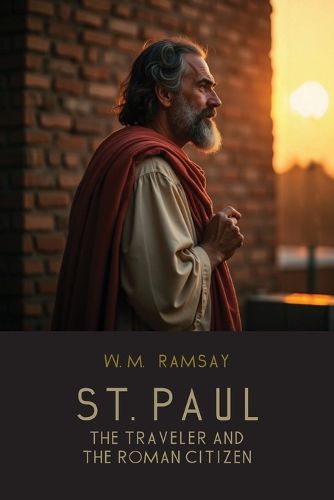Readings Newsletter
Become a Readings Member to make your shopping experience even easier.
Sign in or sign up for free!
You’re not far away from qualifying for FREE standard shipping within Australia
You’ve qualified for FREE standard shipping within Australia
The cart is loading…






This title is printed to order. This book may have been self-published. If so, we cannot guarantee the quality of the content. In the main most books will have gone through the editing process however some may not. We therefore suggest that you be aware of this before ordering this book. If in doubt check either the author or publisher’s details as we are unable to accept any returns unless they are faulty. Please contact us if you have any questions.
St. Paul the Traveler and the Roman Citizen: A Landmark Study in Biblical History and Ancient Geography
Sir William Mitchell Ramsay (1851-1939) was a Scottish archaeologist and New Testament scholar celebrated for his groundbreaking research into the historical context of early Christianity. Educated at the University of Aberdeen and at Oxford, Ramsay initially approached the New Testament with skepticism but, after extensive archaeological work in Asia Minor, he became convinced of its historical reliability. His careful studies of ancient roads, cities, and political structures profoundly influenced biblical scholarship, especially regarding the writings of Luke. Over the course of his career, Ramsay published numerous works that combined rigorous archaeological investigation with theological insight, establishing him as a leading authority on the historical geography of the early Christian world.
St. Paul the Traveler and the Roman Citizen, first published in 1895, presents a detailed and vivid reconstruction of the Apostle Paul's missionary journeys across the Roman Empire. Drawing on archaeological discoveries and historical research, Ramsay offers a compelling portrait of Paul as a real, dynamic figure navigating the complexities of Roman citizenship, ancient law, and Mediterranean culture. Through meticulous scholarship and accessible writing, the book bridges the gap between biblical narrative and historical reality, making it a classic for students of theology, history, and archaeology alike.
$9.00 standard shipping within Australia
FREE standard shipping within Australia for orders over $100.00
Express & International shipping calculated at checkout
Stock availability can be subject to change without notice. We recommend calling the shop or contacting our online team to check availability of low stock items. Please see our Shopping Online page for more details.
This title is printed to order. This book may have been self-published. If so, we cannot guarantee the quality of the content. In the main most books will have gone through the editing process however some may not. We therefore suggest that you be aware of this before ordering this book. If in doubt check either the author or publisher’s details as we are unable to accept any returns unless they are faulty. Please contact us if you have any questions.
St. Paul the Traveler and the Roman Citizen: A Landmark Study in Biblical History and Ancient Geography
Sir William Mitchell Ramsay (1851-1939) was a Scottish archaeologist and New Testament scholar celebrated for his groundbreaking research into the historical context of early Christianity. Educated at the University of Aberdeen and at Oxford, Ramsay initially approached the New Testament with skepticism but, after extensive archaeological work in Asia Minor, he became convinced of its historical reliability. His careful studies of ancient roads, cities, and political structures profoundly influenced biblical scholarship, especially regarding the writings of Luke. Over the course of his career, Ramsay published numerous works that combined rigorous archaeological investigation with theological insight, establishing him as a leading authority on the historical geography of the early Christian world.
St. Paul the Traveler and the Roman Citizen, first published in 1895, presents a detailed and vivid reconstruction of the Apostle Paul's missionary journeys across the Roman Empire. Drawing on archaeological discoveries and historical research, Ramsay offers a compelling portrait of Paul as a real, dynamic figure navigating the complexities of Roman citizenship, ancient law, and Mediterranean culture. Through meticulous scholarship and accessible writing, the book bridges the gap between biblical narrative and historical reality, making it a classic for students of theology, history, and archaeology alike.